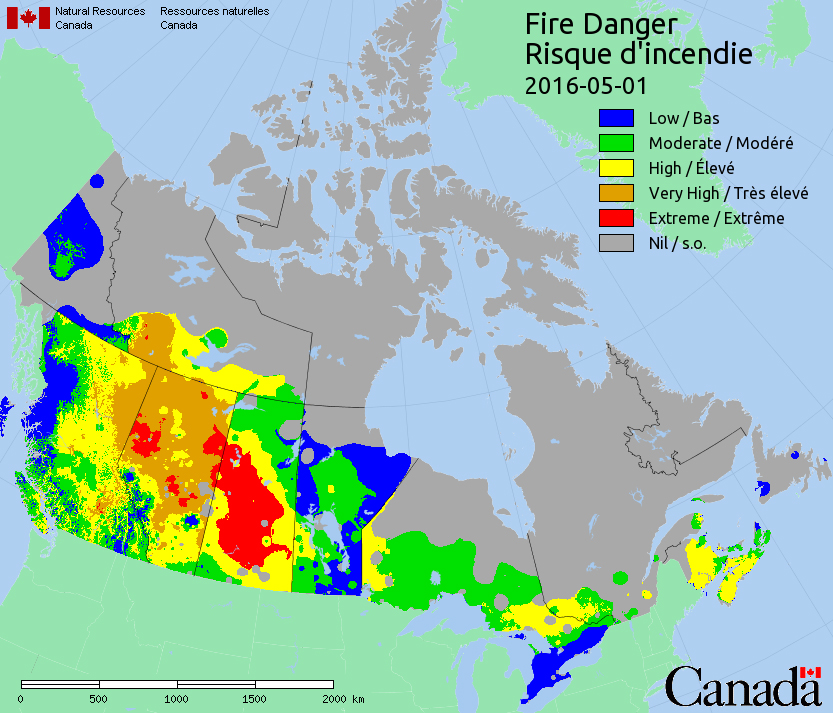REGINA – Large swaths of red — meaning extreme risk — cover Alberta and Saskatchewan on the latest fire danger map from Natural Resources Canada. Many other areas are considered high or very high risk in the two Prairie provinces, where there’s been below average snowfall and above normal temperatures in much of Western Canada.

Kerry Anderson, a fire research scientist with Natural Resources Canada, says that’s due to a weather pattern known as El Nino.
“So now here we are in April, those unusually warm temperatures have melted the snow away faster than normal and now we’ve got a relatively dry, tinder forest out there just waiting to burn,” Anderson said in a phone interview from Edmonton.
Anderson says it’s unusual to see the fire danger risk this high, this early.
He says it’s made for “a dangerous condition for grass fires.”
“Often we experience a large number of grass fires in the spring, usually in April and May, but because of the abnormally warm weather conditions we’re experiencing in now Alberta and Saskatchewan too, the threat for grass fires is quite high,” said Anderson.
READ MORE: Alberta’s hot, dry forests face major threat from miniature bugs
Grass and brush fires forced people from their homes Tuesday in some small communities west of Edmonton.
Parkland County issued a mandatory evacuation alert for people who live in and around the hamlet of Duffield. A county spokesman said people from about 80 homes have registered at a community evacuation centre.
- Uncertain future for Banff pedestrian zone after vehicle-friendly petition validated
- Proposed Renter’s Bill of Rights a good first step, but not enough for Alberta: advocate
- Fire crews contain wildfire northeast of Jasper
- Pro-Palestine protesters escorted out of downtown Calgary mall after allegedly vandalizing bookstore
Residents of Clear Lake and some other subdivisions in the area have been told to be ready to leave on short notice.
The threat of flames and smoke also caused a precautionary evacuation of part of the Paul First Nation.
READ MORE: Wildfire burning near Fort McMurray suburb
Anderson says grass fires can be very dangerous because they move so quickly and spark easily.
“They’re very thin, very flammable. They’re easily ignited and that’s what makes the spring fire season a bit of a threat in Canada. It doesn’t take too much,” he said.
“That brown grass will ignite so quickly.”
However, Anderson says that doesn’t mean there will be more forest fires later this summer.
He says cooler, moister air is expected with another weather pattern known as La Nina, which usually brings colder winters to the Canadian west.
“La Nina, being the opposite of El Nino, will probably mean that the rest of the summer, some time around June, perhaps July, we’ll actually see these extreme weather conditions settle down to a relatively, normal, mild conditions and less of a threat from forest fires,” he said.
There were 720 fires in Saskatchewan last year that forced about 13,000 people from their homes and burned 17,000 square kilometres of forest.
The Saskatchewan government recalled firefighting crews two weeks earlier this year and hired eight new crews in preparation for what could be an early start to the wildfire season.
Alberta also started its wildfire season a month early. The March 1 launch was aimed at ensuring crews were recruited, trained and positioned to respond quickly to any wildfires that break out in early spring and through the year.

Comments